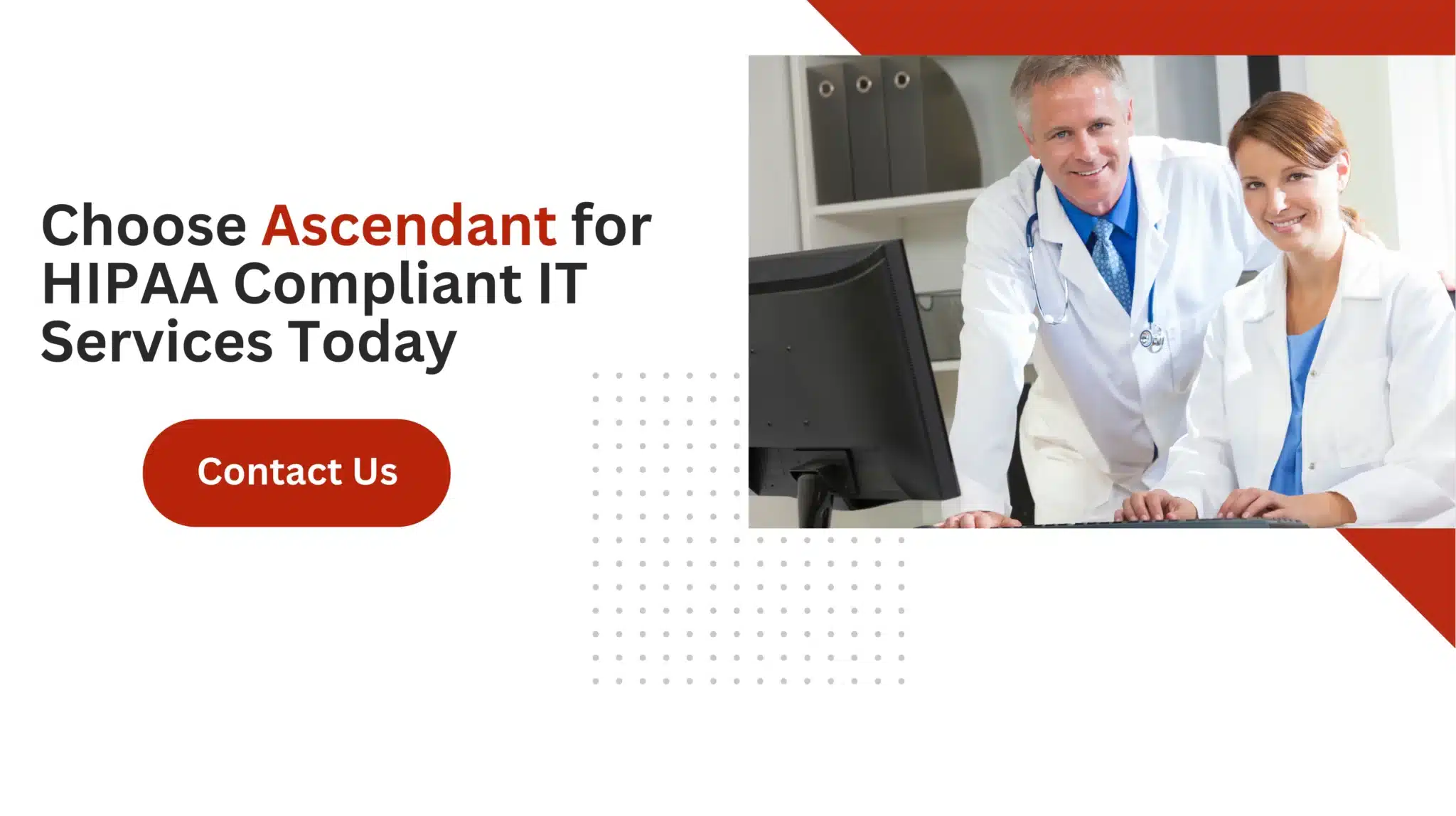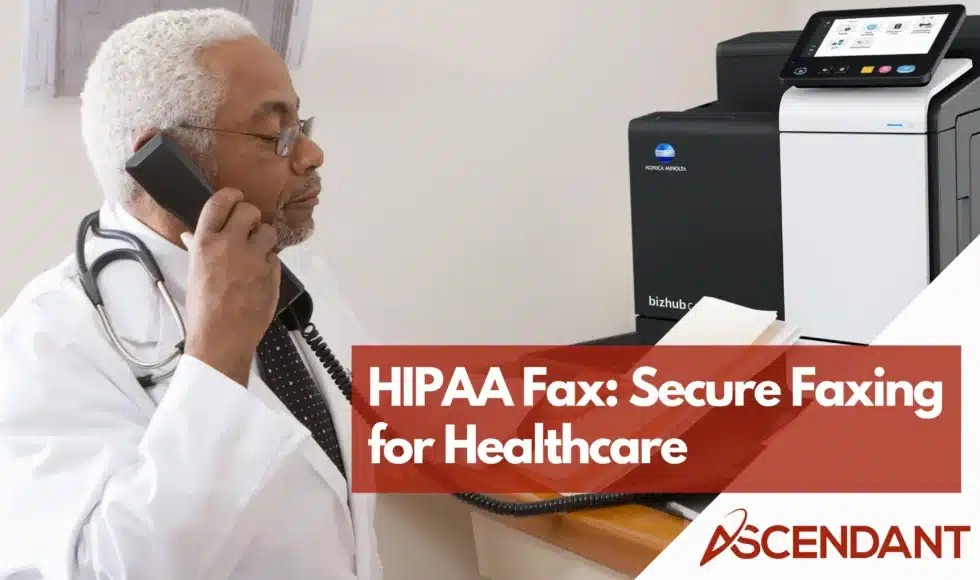Are you worried about faxing HIPAA compliance in your healthcare practice? Ensuring your fax methods align with HIPAA regulations is crucial for protecting patient information. This article provides essential tips and practices for maintaining HIPAA compliance when faxing sensitive data.
Key Takeaways
- HIPAA compliance in faxing requires secure transmission methods and access control to protect patient information.
- Utilizing HIPAA-compliant online fax services with encryption and audit logs enhances security and efficiency in healthcare operations.
- Key practices for HIPAA-compliant faxing include verifying recipient information, using cover sheets, and maintaining thorough audit trails.
Understanding HIPAA Compliance in Faxing
Ensuring patient confidentiality is a fundamental aspect of HIPAA when it comes to faxing. The legislation mandates stringent protection of individual health details, as outlined in the HIPAA Privacy Rule, which not only secures patients’ personal health information but also gives them authority over who has access to their medical records. This directive extends to all forms of protected health information (PHI) transmission methods, including fax transmissions, mandating that they adhere strictly to specific HIPAA rules.
Healthcare providers must prioritize security while transmitting PHI through faxes under the umbrella of HIPAA compliance. Despite being permissible for sharing PHI, standard procedures and precautions are stressed with fax machines usage — this includes ensuring faxes reach their intended destination securely and employing safeguarded methodologies.
It’s crucial for healthcare entities to circumvent using traditional facsimile equipment or unprotected web-based services that might lead to violations. Instead, choosing secure means ensures the protected conveyance of critical patient data. By following these guidelines conscientiously, those within the healthcare field can successfully transmit sensitive medical records without compromising privacy standards dictated by HIPAA.
Making Your Fax Machine HIPAA-Compliant
Ensuring that your fax machine adheres to HIPAA regulations involves more than simply employing the appropriate technology. By allocating a dedicated fax machine exclusively for Protected Health Information (PHI), you heighten security when dealing with confidential documents. To minimize exposure, incoming faxes containing PHI should be received by a specialized machine situated in an area where access is strictly controlled.
Positioning a traditional fax machine within an area protected by locks and limited solely to staff who have proper clearance mitigates the threat of unauthorized individuals gaining entry. Even if machines are secured, having them available to numerous users can increase the chance of non-permitted disclosure. Conducting systematic reviews of how faxes are handled will affirm adherence to guidelines while pinpointing any vulnerabilities.
For full HIPAA compliance, it’s crucial to meticulously track all facsimile exchanges and correspondences. Ensuring secure archiving practices for these transmission records guards against potential breaches involving patient data. Through adopting such protocols diligently, one markedly diminishes the likelihood of violating compliance standards and encountering information leaks.
Secure HIPAA Compliant Fax Service Options

Online fax services have evolved to offer a highly secure form of HIPAA-compliant online fax, crucial for healthcare providers who rely on the confidentiality and security of sensitive patient information. Secure HIPAA compliant fax platforms such as eFax Protect utilize AES 256-bit encryption to prevent unauthorized interception during transmission, ensuring that they adhere strictly to HIPAA compliance standards. By providing cloud-based secure fax solutions designed for industries with stringent regulations, these services maintain rigorous protection over health records through their comprehensive hipaa compliant faxing systems.
By offering advanced features like end-to-end encryption during transfer phases, products like RightFax deliver a higher level of control in managing Protected Health Information (PHI). These capabilities include detailed notifications, tracking statuses, and generating audit logs, which are indispensable tools for healthcare facilities when it comes to preserving the integrity of patient data—essential elements in fostering an environment where PHI is managed securely according to HIPAA mandates.
Leveraging specialized online fax service options like iFax allows practitioners within the medical field to engage in secure and reliable document exchange processes without fear of privacy violations or data breaches. Such enhanced measures ensure that any sharing or storage complies with strict regulatory requirements set by HIPAA guidelines. This means utilizing encrypted channels tailored specifically toward meeting the complex needs associated with protected health information management while affording improved efficiency and peace-of-mind communications across various facets within healthcare operations.
Essential HIPAA Fax Rules
Before transmitting sensitive data, verifying the recipient’s fax number is crucial to avoid accidental exposure of private information. To minimize the risks associated with privacy breaches, one should refrain from sending such details over the fax to recipients that haven’t been authenticated. The potential for human mistakes when inputting a fax number poses a considerable threat by potentially allowing PHI (Protected Health Information) to fall into unauthorized hands.
Employing a cover page bearing a HIPAA-related warning aids in preventing unintended access to faxes sent out. This first sheet must include detailed identification for both sender and receiver to promote proper transmission, and it needs an explicit confidentiality notice signifying the sensitivity of the enclosed materials.
Conducting routine checks on how faxes are handled can reveal weak points within communication processes via facsimile. Pre-alerting intended receivers about upcoming faxes guarantees they await their arrival alertly. Compliance with these protocols ensures that fax communications among healthcare providers remain safe under HIPAA regulations’ umbrella of security requirements.
How to Send a HIPAA-Compliant Fax
Sending a HIPAA-compliant fax involves verifying the recipient’s fax number with a test email before sending sensitive information, which helps avoid misdirected faxes leading to unauthorized access to PHI. Using speed-dial numbers for frequent recipients can also help prevent misdialing.
Prepare your documents and attach a HIPAA-compliant fax cover sheet. The cover sheet should include the sender’s name and fax number, the recipient’s name, a non-medical subject, and the total number of pages. This ensures proper identification and informs the recipient of the nature of the information being sent.
Maintain an audit trail to track what information was sent and by whom. This aids compliance and provides a record in case of disputes or investigations. Following these steps ensures that healthcare providers’ fax communications are secure and HIPAA-compliant.
Risks of Traditional Fax Methods
Traditional faxing poses inherent risks like inconsistent security measures and unauthorized access. Documents can be sent to the wrong recipients or left unattended, leading to potential HIPAA violations. Using non-secure fax machines significantly increases the risk of violating patient privacy under HIPAA.
Encryption for fax transmissions protects patient data from unauthorized access. It ensures that even if the fax is intercepted, the information remains unreadable to unauthorized individuals. Avoid saving PHI on local devices to prevent breaches.
Given these risks, traditional fax methods are unsuitable for transmitting sensitive healthcare information. Modern, secure alternatives are necessary to ensure compliance and protect patient privacy.
Benefits of HIPAA Compliant Online Fax Services
Online fax services that are HIPAA compliant provide a marked improvement over traditional faxing methods. They enhance the dependability of fax transmissions, bolstering confidence between healthcare providers and their patients. These online services expedite the sharing of information, thereby enhancing patient treatment by ensuring prompt availability of critical health records. They’re an indispensable asset for healthcare communications.
These online fax solutions boost efficiency as they enable dispatching documents with just a single click—there’s no need to print or manually transfer them. This process not only conserves time but also lessens chances of faxes going astray or falling into unauthorized hands, establishing it as the premier choice among online fax services. An efax online service notably improves security and streamlines workflows associated with internet-based faxing.
Scalable operations in healthcare greatly benefit from HIPAA-compliant electronicfax systems which accommodate growth without succumbing to limitations imposed by old-fashioned facsimile technologies. By shifting to these advanced platforms, practices can improve functionality while adhering strictly to compliance regulations.
Choosing a HIPAA Compliant Cloud Fax Provider
When choosing a cloud fax provider that adheres to HIPAA standards, it is important for healthcare providers to verify several crucial aspects. The chosen service should utilize multifactor authentication and provide encryption of faxes in order to prevent unauthorized access. It’s also vital that the provider’s online interface employs secure HTTPS connections.
For compliance with legal requirements regarding Protected Health Information (PHI), the cloud fax provider must be willing to execute a Business Associate Agreement (BAA). Audit logs are essential not just for monitoring fax activity but also as evidence of adherence to regulatory norms. A superior cloud-based fax solution will also support efficient management and retrieval of documents from an array of devices.
Incorporating this tool within an existing suite of communication resources can simplify workflow while bolstering PHI security measures. Opting for a subscription model often allows better budget control than services charging per individual fax sent or received. Taking these considerations into account ensures that healthcare providers choose a HIPAA-compliant cloud fax supplier suitable both in upholding high privacy standards and fitting operational needs efficiently.
Ensuring Security When Faxing Medical Records
Ensuring security when faxing medical records involves several best practices. Faxes containing PHI should be delivered promptly to their intended recipient. Hard copies of patient information received via fax must be securely stored to prevent unauthorized access and loss of confidentiality.
Precautions to safeguard information when faxing include verifying the fax number. eFax Protect utilizes encryption protocols to ensure secure transmission of faxes. Additional security measures reduce the likelihood of HIPAA violations.
Implementing these practices ensures that healthcare providers’ fax communications are secure and HIPAA-compliant.
Common Mistakes to Avoid in HIPAA Compliant Faxing
Common mistakes in HIPAA-compliant faxing can lead to significant risks. Sending faxes from a secure, access-controlled location ensures documents are not left unattended. Personnel must be trained on HIPAA compliance and proper faxing procedures to avoid security breaches.
A reliable audit trail tracks what information was sent and received and by whom. Switching to an online fax service helps prevent unattended faxes in busy offices. Avoiding these common pitfalls helps healthcare providers maintain rigorous compliance and protect patient information.
Summary
In this manual, the essential elements of faxing in accordance with HIPAA within healthcare infrastructures have been meticulously examined. It emphasizes not only recognizing the significance of adhering to compliance standards, but also choosing appropriate fax solutions, both crucial for protecting patient data and preserving trust.
Healthcare providers are encouraged to adhere to established best practices and steer clear of typical pitfalls as discussed, which guarantees their fax communications remain protected, meet HIPAA requirements, and operate effectively. Implement these approaches diligently to safeguard your patients’ privacy while improving your operational performance.
 Frequently Asked Questions
Frequently Asked Questions
Why is HIPAA compliance important in faxing?
HIPAA compliance is essential in faxing to safeguard patient information from unauthorized access and maintain privacy, ensuring that healthcare providers uphold their responsibility to protect sensitive health data.
What are the risks of using traditional fax machines?
Using traditional fax machines can lead to unauthorized access, misdirected faxes, and a lack of encryption, which may result in serious breaches of confidentiality and compliance issues, such as HIPAA violations.
What should be included on a HIPAA-compliant fax cover sheet?
A HIPAA-compliant fax cover sheet must include the sender and recipient’s names and fax numbers, a non-medical subject, the total number of pages, and a confidentiality statement to protect sensitive information.
How can I ensure my fax machine is HIPAA-compliant?
To ensure your fax machine is HIPAA-compliant, secure its location, restrict access to authorized personnel, and maintain logs and audits for handling protected health information (PHI).
Implementing these measures will help safeguard sensitive data effectively.
What are the benefits of using HIPAA-compliant online fax services?
Using HIPAA-compliant online fax services ensures enhanced security for patient information while facilitating faster communication and increased productivity, crucial for efficient healthcare operations.
These services also provide scalability to meet the growing needs of healthcare organizations.

